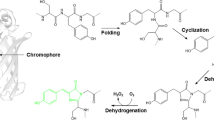Abstract
The mouse currently represents the premier model organism for mammalian genetic studies. Over the past decade the production of targeted and transgenic lines of mice has become commonplace, with current technology allowing the creation of mutations at base pair resolution. Such genome modifications are becoming increasingly elaborate and often incorporate gene-based reporters for tagging different cellular populations. Until recently, lacZ, the bacterial beta-galactosidase gene has been the marker of choice for most studies in the mouse. However, over the past 3 years another valuable reporter has emerged, and its attractiveness is reflected by an explosion in its use in mice. Green fluorescent protein (GFP), a novel autofluorescent genetic reporter derived from the bioluminescent jellyfish Aequorea victoria, currently represents a unique alternative to other gene-based reporters in that its visualization is non-invasive and so can be monitored in real-time in vitro or in vivo. It has the added advantage that it can be quantified by, for example, flow cytometry, confocal microscopy, and fluorometric assays. Several mutants of the original wild-type GFP gene that improve thermostability and fluorescence have been engineered. Enhanced GFP is one such variant, which has gained popularity for use in transgenic or targeted mice. Moreover, various GFP spectral variants have also been developed, and two of these novel color variants, enhanced yellow fluorescent protein (EYFP) and enhanced cyan fluorescent protein (ECFP), can also be used in mice. Since the spectral profiles of the ECFP and EYFP color variants are distinct and non-overlapping, these two reporters can be co-visualized, and are therefore ideal for in vivo double-labeling or fluorescent energy transfer analyses. The use of GFP and its color variants as reporters provides an unprecedented level of sophistication and represents the next step in mouse genome engineering technology by opening up the possibility of combinatorial non-invasive reporter usage within a single animal.
Similar content being viewed by others
Author information
Authors and Affiliations
Additional information
Electronic Publication
Rights and permissions
About this article
Cite this article
Hadjantonakis, AK., Nagy, A. The color of mice: in the light of GFP-variant reporters. Histochem Cell Biol 115, 49–58 (2001). https://doi.org/10.1007/s004180000233
Accepted:
Published:
Issue Date:
DOI: https://doi.org/10.1007/s004180000233




